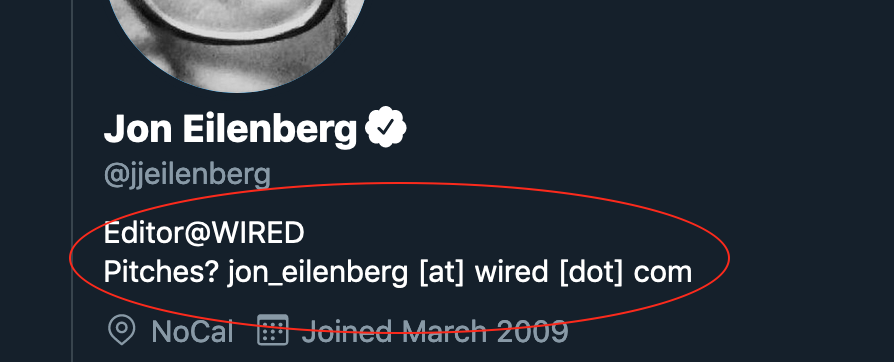Twitter can be an incredibly powerful tool for freelance writers, but it can also be difficult to use. This article will help clear the confusion, to give you straightforward steps for using Twitter to land quality writing jobs.
Here’s the opportunity: Editors of magazines and blogs regularly use Twitter to post calls for pitches or submissions. If you’re following these editors on Twitter, you’ll be able to contact them as soon as they post these calls, giving you opportunities that other writers don’t even know about. Further, by engaging with these editors on Twitter, you’ll be able to establish a small, but important, relationship with them, that can give you a leg up when you send in your pitch.
Here are a few example Twitter posts:
Of course, these Twitter posts are useful after they’ve been published, because they make it clear that these publications pay writers. However, they are the most useful if you’re able to be among the first to respond.
This is especially true for “themed calls” that are put out by editors, when they need specific articles, and are working on a timeline. If you’re able to be among the first to respond, it is almost guaranteed that your pitch will be read. (And that the editor still needs this type of article!)
Here’s an example of such a Twitter post:
This is the type of thing that is really valuable if you’re able to respond within the same day. If you find this a few weeks later, odds are that you won’t be able to get the gig.
There are even editors out there offering $1 per word.
So, how do you stay on top of such posts?
There are couple of different ways to do this.
First, you’ll want to “follow” editors of publications you are interested in, so their posts show up in your Twitter feed. Here’s the thing: It can be really difficult to find these editors by searching on Twitter. While, I recommend doing this, it is imperative that you go directly to the publication’s website, find the name of the editor, and start searching their.
For example, let’s say you want to break into the major magazine, Wired. You’d start by looking up their masthead on their website. This type of publication has many editors. This is a good thing: There are more opportunities for people to follow. Digging through their website, you can find their list of staff here.
In this case, their editor in chief probably won’t be posting calls for stories, but you may as well add them to your Twitter feed. Luckily, his bio links directly to his Twitter feed: @nxthompson
Scrolling through their employee list, Jon Elenberg is listed as the “stories editor.” This is perfect. He is one of the people you’ll be able to pitch. His bio also links to his Twitter feed. Even better, his Twitter page lists his direct email address:

When you look at a Twitter page like this one, you’ll get an insight into the editor’s perspective on quite a few things. The articles they choose to post show where their interests are. This can be useful in helping refine your pitch, as it gives you another perspective on their editorial thinking.
You may also be able to engage in conversation with them, directly on their Twitter posts. If you’re able to add an insightful comment, it may stick in their minds. Some writers, once they’ve established a relationship on a social media platform, ask permission via the platform to send a pitch. If the editor replies with a yes, you have a much better chance of getting paid.
The other method you can use to find opportunities on Twitter is to search the platform directly. This can require sifting through a lot of posts, but can still turn up opportunities.
Sometimes, editors will be in need of good pitches, haven’t gotten them, and so make a public announcement on Twitter. For example, I just searched Twitter for:
“pitch” “pay”
Which turned up a few interesting posts, including, this post (which was just posted!)
There were several other similar posts that appeared in the search.
When you see a post like this, there are a few things to do. First, decide whether or not you would like to send them a pitch. Second, develop a good pitch. (Read this to learn how.) Third, email a pitch to the editor. Finally, write a short and polite comment on the Twitter post, thanking them for the opportunity, and letting them know you sent the pitch their way.
Don’t worry if this seems a little overwhelming at first. The more time you spend on Twitter, the easier it gets. One caveat though. I recommend limiting the amount of time you spend on this. Five minutes a day should be enough to keep you up-to-date on the opportunities.
Want to see a real world example of how a writer has done this? Read this case study.
